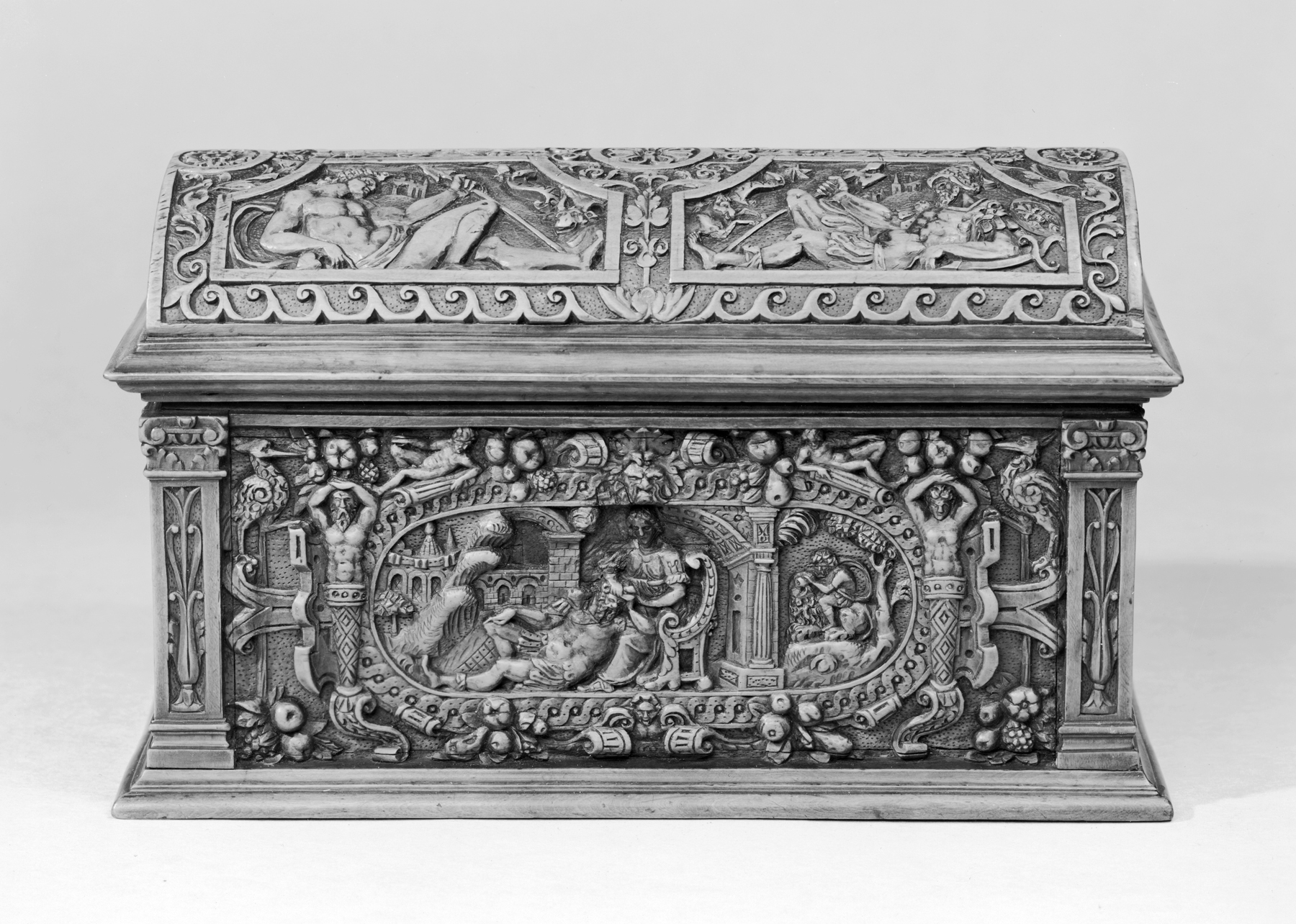Casket with Scenes from the Story of Samson
(Renaissance Europe )
The traditional German wooden casket, or box, with panels around the sides carved with figural subjects is here updated with the newly popular classicizing framing motifs, such as the pillars in the corners and the herms (half human half pedestal) edging the cartouche in front. This is in imitation of the more expensive, prestige French caskets in gilded bronze with painted enamel plaques which began to be acquired by wealthy German patrons in the mid-1500s.
The life of Old Testament strongman Samson, one of the judges or leaders of the ancient Israelites, is recounted in the Book of Judges 13-16 and was well known in the 1500s, being particularly popular in Germany. His great strength was a divine gift that was meant to be used against the Philistines who were oppressing the Israelites. He was capable of great deeds but also of personal vendettas against the Philistines and womanizing which undercut his effectiveness, leading to a final act of self-sacrifice and redemption. The best known episode is depicted on the front of the casket: he is taken advantage of by Delilah, a beautiful Philistine prostitute. Having had sex, he falls asleep and she then can stealthily cut his hair (which he had vowed to God never to cut, a vow responsible for his superhuman strength). With his strength reduced to that of a normal man, he is taken prisoner by waiting Philistine soldiers. His eyes were put out and he was made a slave. But his hair gradually grew long again, and having served such a terrible penance for his pride, he again embraced his role in defence of israel by pulling out two columns of their central temple, killing himself and hundreds of Philistines gathered for a celebration.
Especially as such a casket would commonly be used for small valuables, the owner--probably a man-- would constantly be reminded not to endanger a great purpose by giving in to the delights of temporary worldly satisfactions.
Provenance
Provenance (from the French provenir, 'to come from/forth') is the chronology of the ownership, custody, or location of a historical object. Learn more about provenance at the Walters.
Paul Rattier, Paris, by purchase; Sale, Paris, 1859, no. ???; Jacques Seligmann, Paris, by purchase; Henry Walters, Baltimore, 1910, by purchase; Walters Art Museum, 1931, by bequest.
Conservation
| Date | Description | Narrative |
|---|---|---|
| 1/12/1962 | Treatment | cleaned |
Geographies
Germany (Place of Origin)
Measurements
H: 4 1/2 × W: 7 11/16 × D: 3 3/4 in. (11.5 × 19.6 × 9.5 cm)
Credit Line
Acquired by Henry Walters, 1910
Location in Museum
Accession Number
In libraries, galleries, museums, and archives, an accession number is a unique identifier assigned to each object in the collection.
In libraries, galleries, museums, and archives, an accession number is a unique identifier assigned to each object in the collection.
61.47


